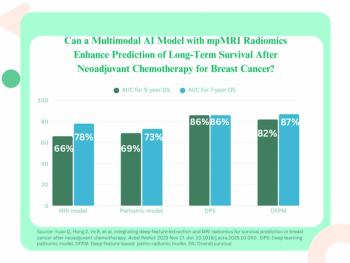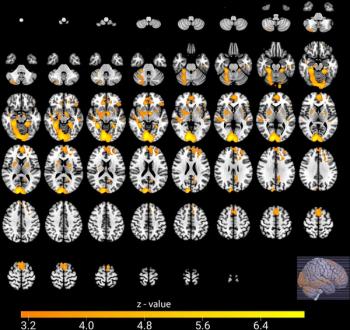
MRI-detected brain atrophy predicts dementia
Cognitively healthy elderly people who experience atrophy in the amygdala and hippocampus have a good chance of developing dementia, according to a study from the Netherlands in the January issue of Archives of General Psychiatry.
Cognitively healthy elderly people who experience atrophy in the amygdala and hippocampus have a good chance of developing dementia, according to a study from the Netherlands in the January issue of Archives of General Psychiatry.
Dr. Tom den Heijer and colleagues of the Erasmus Medical Center in Rotterdam used MR imaging to assess the brain volumes of 511 dementia-free elderly subjects who were part of the Rotterdam Study, a large population-based cohort study that began in 1990.
They screened the participants for dementia at initial visits in 1995 and 1996 and then in follow-up visits between 1997 and 2003. They asked about memory problems and performed extensive neuropsychological testing. Over the follow-up period, 35 participants developed dementia, and 26 of those were diagnosed with Alzheimer's disease.
People with severe amygdalar or hippocampal atrophy had the highest risk of developing dementia or AD over the course of the study, which followed participants for an average period of six years.
Volume reductions between 5% and 17% were strongly associated with the development of dementia, according to the study. In persons with mild to moderate Alzheimer's disease, volume reduction rates were between 25% and 40%, suggesting that atrophy rates accelerate in patients with AD.
"We show that hippocampal and amygdalar atrophy on MRI increases the risk of dementia during a long follow-up period, even in people who have not yet developed memory complaints or cognitive impairment," the authors wrote. "This is in line with the hypothesis that there is a long presymptomatic period in the development of Alzheimer's disease. Our data show that atrophy of structures in the medial temporal lobe is detectable at least six years before clinical onset."
While structural MRI measurements may be sensitive to dementia, they are not very specific. Most people with atrophy did not develop dementia, even after six years. The authors suggest that further prospective population studies be conducted to find additional biomarkers, including other brain imaging parameters, that alone or in combination with clinical and genetic characteristics can help separate those who are at risk for developing dementia from those who are not.
For more information from the Diagnostic Imaging archives:
Newsletter
Stay at the forefront of radiology with the Diagnostic Imaging newsletter, delivering the latest news, clinical insights, and imaging advancements for today’s radiologists.

























